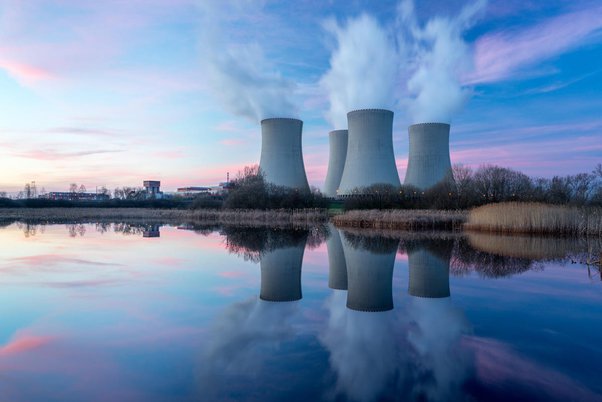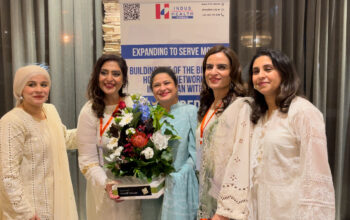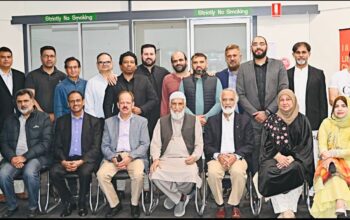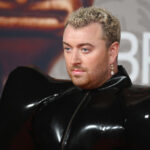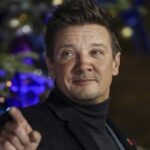Can nuclear power ever truly be safe?
After a devastating earthquake and tsunami sparked a nuclear meltdown at the Fukushima powerplant in Japan, the world simply switched off nuclear energy.
On the 11th anniversary of the Fukushima horror, Under Investigation experts debate whether it’s time for Australia to consider flicking that switch on.
WHAT IS NUCLEAR ENERGY?
Nuclear energy works exactly as other energy sources do to produce electricity. Nuclear power heats water that produces steam which then drives turbines to create electricity.
It’s the same as coal-fired power plants, but using radioactive uranium as the fuel source.
Advocates say we could swap all our coal-fired power stations for this alternative, but nuclear energy is currently banned in Australia and the industry has a serious image problem.
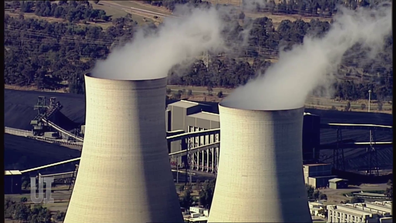
Nuclear materials fuel the world’s most devastating weapons, and as has been proven, on multiple occasions, when there’s a serious problem at a reactor, it’s hell on earth.
In 1979, a partial meltdown at the Three Mile Island nuclear plant in Pennsylvania, became America’s worst nuclear accident.
Seven years later in 1986, it was Europe’s turn with the catastrophe of Chernobyl. Then in 2011, Japan and the Fukushima disaster.
Can nuclear power ever be truly safe? And are we crazy to even consider it?
For our Under Investigation experts – that question is the battleline.
FUKISHIMA – JAPAN
Fukushima is a disaster that no-one wants repeated.
At 2.46 pm, March 11, 2011, a once-in-a century earthquake – the fourth most powerful ever recorded, detonated 72 kilometres off the coast of Japan.
“This is one of the worst-case scenario events we could imagine, it’s one of the worst natural disasters we’ve seen,” Coastal marine expert, Dr. Hannah Power tells the panel.
To withstand an earthquake and prevent a nuclear meltdown, reactors have a design mechanism that shuts the plant down.
But, when the tsunami hit with an earth-shattering force, the emergency generators stopped and the shutdown failed.
Heroic efforts could not stop the reactor cores super-heating, three partially melted down, causing massive explosions of hydrogen, and releasing clouds of radioactive material into the atmosphere.
“It was just absolutely hideous, and the Prime Minister of Japan at the time thought he would have to evacuate 35 million people from Tokyo,” anti-nuclear activist Dr. Helen Caldicott says.
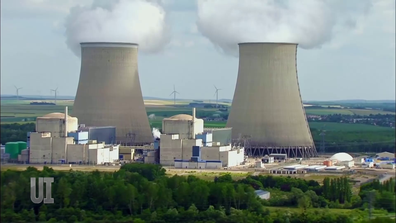
Nearly 20,000 people died in the Fukushima devastation and more than six thousand were injured.
There are no official reports available of how many deaths are due to radiation.
The fallout was disastrous for the nuclear energy industry.
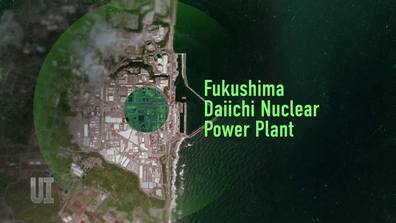
Former NSW Premier, and Australian Foreign Affairs Minister, Bob Carr, was a nuclear advocate at the time of Fukushima.
“I was still a believer that nuclear could deliver for us. What I right now see is that it turned the world away from nuclear power,” he says.
However, Australia’s geographical location puts us at a much lower risk of serious earthquakes and tsunamis.
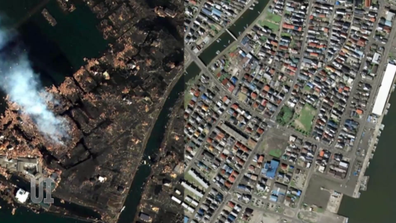
Anti-nuclear activist Dr. Helen Caldicott says that if we think we can avoid the issues faced in Fukushima, what happened at Chernobyl should warn us off nuclear forever.
“Up to a million people in Europe have died already from all sorts of cancers, genetic diseases, and 40 per cent of the European continent is now radioactive from the fallout from Chernobyl,” the Nobel Prize nominee says, although her statistics are vehemently questioned and labelled as scare-mongering by nuclear energy advocates, who point out that they are based on research that has not been peer-reviewed.
CHERNOBYL – UKRAINIAN SSR
The world’s worst nuclear accident happened in Ukraine in 1986.
The badly designed Chernobyl reactor experienced a steam explosion and fires causing meltdowns that released ten-times more radiation than Fukushima.
Much has changed in the nuclear industry since that accident 36 years ago, but what has persisted is a deep fear of radiation.
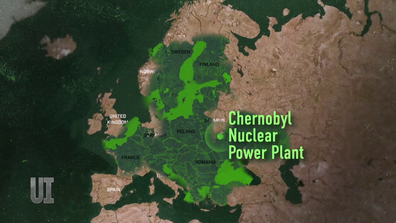
Nuclear advocates say we have been sold a lie by the anti-nuclear movement.
World-renowned molecular pathologist, Professor Geraldine Thomas has studied the human impact of radiation from both the Fukushima and Chernobyl disasters.
She says the death toll resulting from Chernobyl has been grossly exaggerated.
“You can’t just pluck death statistics out of the air and say, well, because Chernobyl happened, everybody who has died since then [it’s] from exposure to radiation, that’s just ridiculous,” she says.
The number of deaths from Chernobyl, assessed by a United Nations scientific committee, is 4000.
But Dr. Helen Caldicott says the real death toll is 985,000, using a figure sourced from the same research paper that critics claim has never been peer-reviewed.
“The best minds in the world that have looked at this and we just can’t find the death toll that they’re talking about,” Professor Geraldine Thomas says.
FROM NUCLEAR DISASTER TO NUCLEAR COMEBACK
If the fear of radiation from nuclear accidents is important in this debate, so too is the issue of safely disposing of radioactive waste, including highly reactive spent fuel rods and isotopes produced by the reaction in the core.
The nuclear industry says that virtually all the dangerous radiation is contained in only three per cent of the waste, which can be stored in secure containers deep underground – the way other hazardous waste is currently disposed of.
But there may be a better solution: new reactors designed to recycle their own waste.
“Our options for a future with nuclear power is to fully consume what we call close the nuclear fuel cycle and not have long-lived waste,” Nuclear scientist and civil engineer Rob Parker tells the panel.
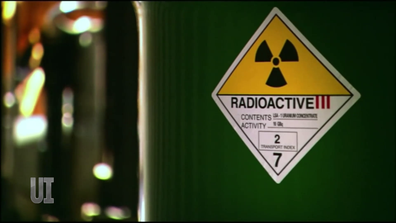
But for activist Dr. Helen Caldicott, nuclear power poses a massive threat to global warming and the future of our planet.
“If I was a young person now, I’d be extremely depressed, that global warming is occurring apace,” she says.
“Our politicians are scientifically and medically illiterate. Are we going to kill people so we can turn our lights on because we have to have nuclear power? It’s an evil industry.”
CAN WE EVER BANK ON RENEWABLE ENERGY?
One of the most significant points of debate is whether renewable energies like wind and solar will ever fully power the planet. On that the panel is divided.
“The reality is that nowhere around the world right now has anyone come close to running their electrical grid, let alone their entire energy systems off just wind and solar,” President of the Australian Nuclear Association, Dr. Joanne Lackenby says.

There is an argument by nuclear supporters that renewable energy sources are not only unreliable, but they have a huge environmental impact, with thousands of hectares covered by solar panels and wind farms.
Molecular pathologist, Professor Geraldine Thomas, who has studied both the Fukushima and Chernobyl disasters, believes the world, and Australia, should not be running scared of nuclear energy.
“I think you have to look at yourselves and say, how are we going to decarbonise and how are we going to maintain the lifestyle that we want?” she tells the panel.
IS AUSTRALIA ALREADY IN THE NUCLEAR CLUB?
Australia hasn’t seriously considered nuclear energy for decades, mostly due to the nuclear accidents at Chernobyl and Fukushima.
But our new defence treaty with the US that guarantees a fleet of nuclear submarines, and has all but brought Australia closer to joining the nuclear energy club.
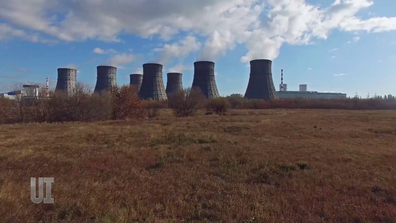
It should be noted recent public opinion polls do show that a majority of Australians support nuclear energy as an alternative to fossil fuels.
It’s cheaper, cleaner and, supporters say, more reliable than many renewable energy alternatives like wind and solar.
Pressing climate goals may well be the reason Australia puts nuclear energy back on the agenda.
For the moment the question remains – is it time to step out of Fukushima’s shadow, or should we resist?

